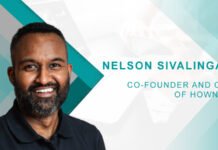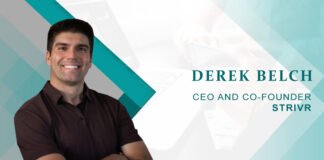To Both: “Welcome to HRTech Cube, Brad and Izzy! Thank you for joining us today. To start, could you please share a bit about your roles at VergeSense and what inspired you to focus on leveraging data to enhance workplace strategies?”
Izzy: Thanks for having us. Brad and I lead the VergeSense Strategic Advisory Services team. We provide consulting services to VergeSense customers, blending design thinking with a data-driven approach.
Brad: There is a newfound intentionality in how organizations think about their workspaces – an awakening. With hybrid work here to stay and employees expecting a commute-worthy office experience, the space itself has become more important. We help organizations gain an understanding of what’s actually happening in their offices so they can optimize with confidence. Whether optimization is done through policy, redistributing neighborhoods, dynamic stacking or enhancing the employee experience, there’s a lot of creativity involved in the process.
To Both: “Working together as colleagues, how do you approach collaboration? What fresh perspectives or innovative changes do you bring to the table when shaping workplace strategies?”
Izzy: We start with context. In order to find a path to solving a challenge or telling a data story, it is important to get a lay of the land. What are the existing conditions? What processes are in place and what metrics do teams currently rely on? What does “success” mean to the stakeholders? Who are our stakeholders? What are the opportunities for change? Looking to the past and present often creates clarity in the path toward something more valuable and creative for the future.
To Brad: “Brad, how does your approach at VergeSense ensure that data becomes a central part of workspace optimization?”
VergeSense was founded to help organizations collect occupancy data to make better decisions about their portfolios and office spaces. Our sensors help leaders gather accurate data about how their spaces are being used, and our analytics help leaders make sense of the data to take action to further optimize their spaces. It’s important that they see the value of the data and the insights gained from it, whether that helps them make a decision, enter or leave a lease, or modify their office space. We’ve developed a really serious customer success muscle that’s consultative. Anything we can do to help you make the most of your occupancy data – ROI outcomes – is a win for everyone.
To Izzy: “Izzy, when you think about intentional workplace design, how do you prioritize and act on employee feedback in your projects?”
One thing that we know after working with customers all over the world is that every workforce is different. There’s a lot more nuance to it than you might think. So, it’s important to measure how employees interact with your existing space. People vote with their feet, and there’s a lot to uncover with respect to employee preferences or working styles. How do they use the space naturally? What spaces do they gravitate towards? What spaces are used in a way that differs from the design intent? Insights from employee usage behavior and qualitative feedback can help inform how they will use new or modified space.
To Brad: “Can you walk us through an example where occupancy intelligence led to a significant improvement in workspace functionality or efficiency?”
One of our customers knew that their office was stuck in a pre-pandemic layout that wasn’t supporting increased employee collaboration needs. They assumed there weren’t enough conference rooms and were seriously considering leasing another floor. Analysis of their conference room booking data revealed that recurring meeting blocks were the issue – 40% of reserved spots were no-shows. Instead of a new lease, the client implemented space-booking automation that released rooms when attendees didn’t show, allowing others to use the space.
To Izzy: “Izzy, how do you personally ensure that the workspaces strategies you advise on strike the right balance between efficiency and fostering collaboration?”
We dig into multiple data sources – sensors, badge swipes, WiFi connections and more – to find the balance between a space that’s efficient, productive, and joyful.
One of the reasons real estate teams haven’t been able to predict how employees will use a space before now, is that it was very one-dimensional. Now we have the capability to combine a lot more data sources, with the context of metadata about the space, and benchmarking information from other similar spaces to complete the picture. Using data from clients lets us tailor insights and recommendations to their workforce, their style and culture, and the kind of tasks that employees need to do in each space. Each customer’s unique set of circumstances and unique datasets will inform a distinct design.
To Brad: “In your experience, what’s the most common challenge organizations face when trying to integrate data into their workplace strategies?”
The biggest challenge is extracting insights from data. Real estate and workplace teams are inundated with space usage data from badge swipes, WiFi logs, and sensors. Just understanding the utilization of a building isn’t good enough. If you want to have meaningful conversations with business stakeholders about what space is genuinely needed and be able to justify real estate decisions and expenditures, then you need to see the patterns and understand what’s happening in each space on each floor. AI analysis makes the process so much faster and can streamline inputs from multiple sources so business decisions can be made.
We have a biotechnology customer who was looking at their workspace efficiency. Using sensor data, the team examined their conference room usage, enabling them to refine the space design. AI analysis provided visibility into booking data at the building and floor levels, which yielded ROI in the form of hours reclaimed.
To Izzy: “Sustainability is a big focus for many organizations now. How do you align sustainability goals with the operational needs of a workplace?”
Sustainability and resource usage are a natural extension of occupancy intelligence. If you know where and when employees are in a space, you can also determine when to turn off lights, whether to heat or cool the space, and how often to schedule cleaning. Although there are some infrastructure and tooling requirements to make the data and building systems work in harmony, the savings from these kinds of insights can be sizable.
We’re hearing from customers that a data-driven approach has moved the needle on sustainability goals.
To Izzy: “What advice would you give to companies just starting to adopt data-driven workplace strategies to make their efforts effective?”
We noticed early on that storytelling is an important part of workspace optimization. If your team needs to go to your CFO and present a case for renovating space, you’ll need a data-backed story to allow you to have a fact-based conversation. How do you access the right data? How do you produce the charts you’ll need?
Maybe the CFO has a theory that the company needs to cut space and targets a floor that they consider “quieter”. Through exploring the data, you discover that conference rooms on that floor are simultaneously full during almost half the working hours, and it’s actually acting as a bottleneck because there aren’t other conference rooms available. That story can impact the decisions made because the data reflects actual behaviors. There may still be an opportunity to cut space but the exploration creates more opportunity to understand the way current supply and design are meeting workstyle demands.
To Brad: “Looking at the future, what trends do you think will define workplace design and occupancy intelligence over the next five years?”
I’m excited by the prospect of more stability across many industries. There’s still going to continue to be a lot of change and fluidity, but customers will be able to anchor in on where they want to go next with their workspace and put some investment into new lease sizes and new spaces.
That stability is coming from organizations becoming more comfortable with analyzing their occupancy data to make smarter decisions. We’re seeing more cases where older metrics might indicate that the company needs a new building. Once they turn to a more complete view of their occupancy data and new ways of looking at the space, and see that they don’t necessarily need a new space; they just need to optimize their current space. It means organizations can be more creative about leveraging what they have.
Also, look for VergeSense to use our AI tools to be more proactive with our clients. Instead of answering queries, which depend on the client asking the right questions, we’ll be able to offer up occupancy insights and opportunities that they might not have considered.
To Izzy: “If you could give one key takeaway to organizations aiming to build efficient and employee-friendly spaces, what would it be?”
For any workspace optimization effort, it’s important to remember that you’re competing with an array of working options that employees have available to them, including home offices, coworking spaces, coffee shops, etc. What can employers do to ensure everybody has what they need to be productive? Answering that involves defining what a successful employee experience means so you can build towards it, evaluate it, and make decisions around it. And it means trusting employees to know what they need to get their work done and what environments foster that on an individual level, while also offering them new and innovative environments that can help meet productivity goals for the business while providing a joyful experience.

Brad Goldenco-Lead, VergeSense
Brad Golden, Workplace Insights Lead, is also a member of the VergeSense SAS. He designs applied data strategies to transform insights into action for VergeSense customers.

Izzy Cannell co-Lead, VergeSense
Izzy Cannell, Workplace Insights Lead, is a member of the VergeSense Strategic Advisory Services team (SAS). She provides consulting services exclusively to VergeSense customers, featuring a data-driven approach blended with design thinking.












